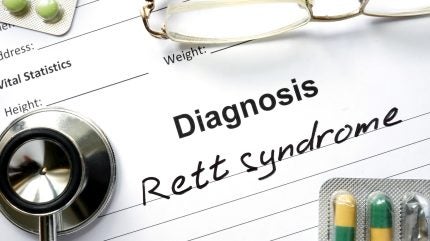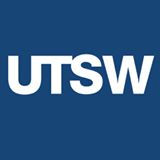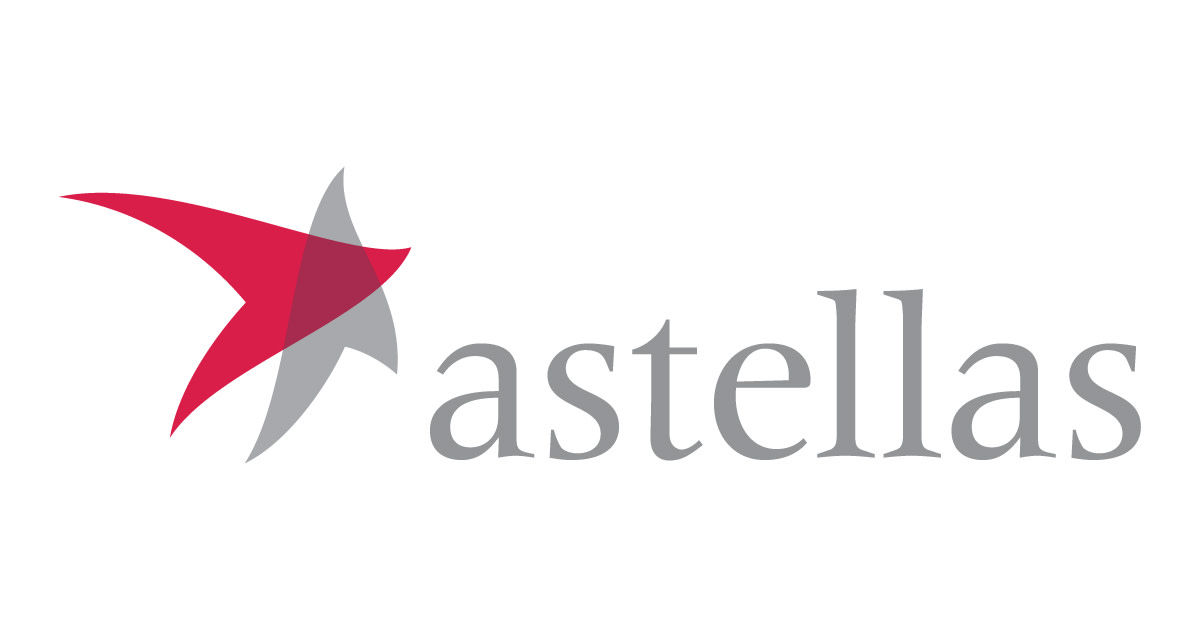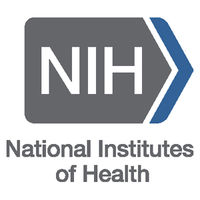预约演示
更新于:2025-05-07
scAAV9/JeT-GAN
更新于:2025-05-07
概要
基本信息
最高研发阶段临床1期 |
首次获批日期- |
最高研发阶段(中国)- |
特殊审评罕见儿科疾病 (美国)、孤儿药 (欧盟) |
登录后查看时间轴
关联
1
项与 scAAV9/JeT-GAN 相关的临床试验NCT02362438
A Phase I Study of Intrathecal Administration of scAAV9/JeT-GAN for the Treatment of Giant Axonal Neuropathy
Title: Intrathecal Administration of scAAV9/JeT-GAN for the Treatment of Giant Axonal Neuropathy
Background:
- The Gigaxonin gene lets the body make a protein chemical called Gigaxonin. Nerves need Gigaxonin to work properly. Giant Axonal Neuropathy (GAN) causes a shortage of functional Gigaxonin. Nerves stop working normally in people with GAN. This causes problems with walking and sometimes with eating, breathing, and many other activities. GAN has no cure. Over time, GAN can shorten a person s life. Researchers want to see if a gene transfer treatment may help people with GAN.
Objectives:
- To see if a gene transfer is safe and shows potential to help people with GAN.
Eligibility:
- People age 3 and older with GAN.
Design:
* For 1 month following gene transfer participants must live full-time within 100 miles of the NIH.
* Participants will be screened by phone and in person. They will take many tests. Some are listed below. Their medical records will be reviewed. Their caregivers may be contacted.
* Participants will have a total of about 27 visits, weekly, monthly, and then yearly over 15 years. They will include many of the tests below.
* Physical and nervous system exams.
* Blood, urine, and stool samples.
* Nerve, lung, heart, and eye tests.
* Questionnaires.
* MRI scans, nerve biopsies, and spinal taps. Participants will be sedated for some tests.
* Speech, memory, muscle, and mobility tests.
* Skin biopsy (small sample removed).
* Participants will take many medicines. Some require intravenous lines.
* Participants will get the gene transfer through an injection by spinal tap into their cerebrospinal fluid, which flows around the brain and spinal cord. The genes are packed in a modified virus that carries the genes to cells in their body. Participants safety is not guaranteed.
Background:
- The Gigaxonin gene lets the body make a protein chemical called Gigaxonin. Nerves need Gigaxonin to work properly. Giant Axonal Neuropathy (GAN) causes a shortage of functional Gigaxonin. Nerves stop working normally in people with GAN. This causes problems with walking and sometimes with eating, breathing, and many other activities. GAN has no cure. Over time, GAN can shorten a person s life. Researchers want to see if a gene transfer treatment may help people with GAN.
Objectives:
- To see if a gene transfer is safe and shows potential to help people with GAN.
Eligibility:
- People age 3 and older with GAN.
Design:
* For 1 month following gene transfer participants must live full-time within 100 miles of the NIH.
* Participants will be screened by phone and in person. They will take many tests. Some are listed below. Their medical records will be reviewed. Their caregivers may be contacted.
* Participants will have a total of about 27 visits, weekly, monthly, and then yearly over 15 years. They will include many of the tests below.
* Physical and nervous system exams.
* Blood, urine, and stool samples.
* Nerve, lung, heart, and eye tests.
* Questionnaires.
* MRI scans, nerve biopsies, and spinal taps. Participants will be sedated for some tests.
* Speech, memory, muscle, and mobility tests.
* Skin biopsy (small sample removed).
* Participants will take many medicines. Some require intravenous lines.
* Participants will get the gene transfer through an injection by spinal tap into their cerebrospinal fluid, which flows around the brain and spinal cord. The genes are packed in a modified virus that carries the genes to cells in their body. Participants safety is not guaranteed.
开始日期2015-04-24 |
100 项与 scAAV9/JeT-GAN 相关的临床结果
登录后查看更多信息
100 项与 scAAV9/JeT-GAN 相关的转化医学
登录后查看更多信息
100 项与 scAAV9/JeT-GAN 相关的专利(医药)
登录后查看更多信息
1
项与 scAAV9/JeT-GAN 相关的文献(医药)2024-03-21·New England Journal of Medicine1区 · 医学
Intrathecal Gene Therapy for Giant Axonal Neuropathy
1区 · 医学
Article
作者: Mohassel, Payam ; Armao, Diane ; Gray, Steven J ; Bönnemann, Carsten G ; Tesfaye, Eshetu ; Carlin, Bradley P ; Bharucha-Goebel, Diana X ; Bailey, Rachel M ; Hooper, Jody E ; Foley, A Reghan ; Charnas, Lawrence ; Chichester, Jessica A ; Norato, Gina ; Lehky, Tanya ; Crawford, Thomas O ; Calcedo, Roberto ; Sumner, Charlotte J ; Bouldin, Thomas W ; Kang, Elizabeth M ; Todd, Joshua J ; Saade, Dimah ; Hoke, Ahmet ; Rybin, Denis ; Waite, Melissa ; Jain, Minal ; Huryn, Laryssa A ; Seremula, Beth ; Heiss, John D ; Zein, Wadih M
42
项与 scAAV9/JeT-GAN 相关的新闻(医药)2024-07-03
Pictured: Man climbing a DNA double helix/iStock, Moor Studio
Taysha Gene Therapies touted positive early-stage data last month for its gene therapy to treat Rett syndrome, which has become the company’s main focus after cutting other programs and laying off 35% of its staff. If successful, the candidate for Rett syndrome has the capability to put Taysha in a billion-dollar market.
The early-stage data only show the results of four Rett patients from a Phase I/II trial on Taysha’s AAV9 gene transfer therapy TSHA-102, however. Taysha’s focus on Rett comes after a patient death was recorded in 2022 for its experimental gene therapy for Sandhoff and Tay-Sachs diseases. While the death was not attributed to the therapy itself, it still drove down the company’s stock price, and eventually, Taysha abandoned the program, throwing its resources into Rett.
If TSHA-102 does go the distance, the market could be a lucrative play for the Dallas-based biotech. With an estimated 16,600 to 25,800 patients in the U.S., the market totals an estimated $2.5 billion, according to an analyst report from Bank of Montreal Capital Markets. If everything goes according to plan, Taysha may have a solid opportunity to carve out a good slice of the Rett market—to the tune of around $1 billion at peak revenues in 2035, experts told BioSpace.
“There’s a clear need for something better that could give these patients a real chance at having a more normal life,” said Maury Raycroft, an equity analyst at Jefferies.
Taysha’s Push in Rett Syndrome
After the patient death in 2022, Taysha announced it would focus on targeting Rett and giant axonal neuropathy (GAN) but pause work on its other R&D efforts, and axed 35% of its workforce. In 2023, further setbacks hit Taysha as the FDA requested more patient dosing to support a Biological License Application for its GAN therapy, TSHA-120.
Finally, after a Type C meeting later that year, the company chose to halt all development of TSHA-120 and focus entirely on TSHA-102.
The trial data reported in June was split into two cohorts. The pediatric patients showed improvements in motor skills, communication, and a reduction in the rates of seizure, among other observations. The adults in the trial had similar results, with one patient having normal sleep for the first time in 20 years. No serious adverse events occurred during the trial, according to Taysha.
However, the results are not only early stage but involve a very small number of patients, Raycroft reminded BioSpace. In addition, investors’ feedback noted that the scales Taysha used did not show “clear trends” or clear consistency. Raycroft said that these scales are based on caregiver and clinician assessments, however, and he puts more weight on the clinicians’ findings. He sees this as a positive start for Taysha and believes that higher dose data should be available in the year’s second half. “I think the adult data is potentially even more meaningful, based on this update, because we’re seeing data after one year for one patient, and then half the year for the other patient, and both of those patients seem durable, at a minimum.”
The Future for Taysha
For smaller biotechs like Taysha, culling programs and eliminating employees may be necessary to preserve capital to get a product on the market, Raycroft said. He noted that the Rett candidate is Taysha’s best opportunity to get a product across the finish line, and it ultimately makes sense to prioritize and focus on it.
He noted that Reata Therapeutics made a similar play with Friedreich’s ataxia drug Skyclarys, which was approved by the FDA last year and eventually acquired by Biogen. The company previously discontinued other programs in its pipeline, including its candidate for chronic kidney disease, choosing to focus solely on getting Skyclarys across the finish line.
With its recent results, Taysha is looking to net more funds, recently announcing a public offering of over 14 million shares, which the company expects to bring around $75 million. In SEC documents, Taysha highlighted that the funds from the public offering would go toward the clinical, regulatory and manufacturing development of TSHA-102.
With Taysha, Raycroft said, “they’re focused on reducing their expenses. And making sure that every dollar they spend will be more relevant to advancing this Rett syndrome program because this is their best option at reaching that pinnacle.”
Tyler Patchen is a staff writer at BioSpace. You can reach him at tyler.patchen@biospace.com. Follow him on LinkedIn.
临床结果并购基因疗法
2024-05-03
Rett syndrome is characterised by loss of communication, slowing or regression of development, and motor and respiratory impairment. Credit: designer491 via Getty Images.
Taysha Gene Therapies has received a regenerative medicine advanced therapy (RMAT) designation for its gene therapy candidate TSHA-102 from the US Food and Drug Administration (FDA) to treat Rett syndrome.
TSHA-102 is a gene therapy that involves using an AAV9 virus to deliver the MECP2 gene directly into the central nervous system to treat the underlying cause of Rett syndrome, a rare genetic disorder caused by mutations in the MECP2 gene that affects brain development. It primarily occurs in girls and results in severe mental and physical disability.
The RMAT designation programme is intended to expedite the development and review of regenerative therapies to treat, modify, reverse, or cure a serious condition.
The FDA’s decision to grant the designation to Taysha is supported by initial results from the ongoing Phase I/II REVEAL clinical trials in adults (NCT05606614), and paediatric (NCT06152237) patients. The FDA reviewed safety and efficacy data from the first three patients dosed with the low dose of TSHA-102 across the two trials. Initial safety and efficacy data from the high-dose cohorts from both trials is expected in the second half of 2024, as per a 29 February update.
In October 2022, Astellas announced plans to make a
strategic investment
to back the development of Taysha’s development programmes for Rett syndrome and giant axonal neuropathy (GAN). The pharma giant gained an exclusive option for licensing two clinical-stage programmes of Taysha—TSHA-102 and TSHA-120 for the treatment of GAN.
See Also:
Vertex Pharmaceuticals gets grant for treatment of alpha-1 antitrypsin deficiency with compound of formula (i)
BioCryst Pharmaceuticals gets grant for inhibitors of the complement system for disease treatment
Things however did not go to plan as about a year later, Taysha
discontinued its
TSHA-120 development programme following a Type C meeting with the US Food and Drug Administration (FDA), where the agency suggested the company conduct a placebo-controlled study and do a long-term follow-up trial. Following this, Astellas chose not to exercise its right to obtain an exclusive licence for the drug.
After this, Taysha said that it would shift its focus to the TSHA-102 programme. According to GlobalData’s Pharma Intelligence Center, TSHA-102 is forecast to generate $650m in sales in 2030.
GlobalData is the parent company of
Pharmaceutical Technology.
In the announcement accompanying the designation, Taysha’s president and head of R&D Sukumar Nagendran said: “We believe receiving RMAT designation reinforces the high unmet medical need in Rett syndrome and the therapeutic potential of TSHA-102 to change the treatment paradigm.”
In April 2023, Acadia
commercialised the first
US Rett syndrome drug Daybue (trofinetide). The drug deactivates certain brain cells to prevent further neurodegeneration, thus preventing injury-induced seizures. Still, there is currently no disease-modifying treatment that treats the genetic root of the disease.

引进/卖出上市批准基因疗法快速通道
2024-02-19
Feb. 15, 2024 -- Taysha Gene Therapies, Inc. (Nasdaq: TSHA) (“Taysha” or “the Company”), a clinical-stage gene therapy company focused on developing and commercializing AAV-based gene therapies for the treatment of monogenic diseases of the central nervous system (CNS), today provided an update on its deprioritized pipeline programs as part of an ongoing effort to help support their further potential development.
Taysha has been working to find ways to advance its deprioritized programs. On November 13, 2023, Taysha terminated its existing loan and security agreement and entered into a new loan and security agreement that provides consent to allow the Company to transfer intellectual property (IP) for several deprioritized programs to third parties in a more efficient manner. The Company’s new loan and security agreement also extended its cash runway into 2026.
TSHA-120: The Company initiated the transfer of the United States Food and Drug Administration Investigational New Drug (IND) application and investigational clinical trial material for TSHA-120 in giant axonal neuropathy (GAN) to clinical trial collaborator National Institute of Neurological Disorders and Stroke (NINDS), creating an opportunity for continued clinical evaluation of TSHA-120 in GAN. Additionally, the Company entered discussions with the originating advocacy organization regarding TSHA-120 in an effort to transfer rights back to the advocacy organization to move the program forward.
TSHA-101: The Company transferred rights back to Queen’s University (Queen’s) for TSHA-101 in GM2 gangliosidosis, resulting in Queen’s regaining exclusive IP to the program.
TSHA-104 and TSHA-112: The Company transferred rights back to the originating institution for select programs, including TSHA-104 in SURF1-associated Leigh syndrome and TSHA-112 in APBD.
TSHA-118: The Company provided investigational clinical trial material for TSHA-118 in CLN1 to support an individual-patient investigator-initiated IND request from RUSH University Medical Center for the treatment of a patient with CLN1 disease.
“Today’s announcement demonstrates meaningful progress to advance important development work for several deprioritized programs. Creating options for these programs has been a focus since the Company completed a management change in December 2022, and the new loan and security agreement afforded the flexibility to implement certain opportunities,” said Sean P. Nolan, Chairman and Chief Executive Officer of Taysha. “As we continue to focus on advancing our lead TSHA-102 program for the treatment of Rett syndrome, we are pleased that we can ensure these programs are provided to the right advocates, clinicians and scientific experts who can potentially move these programs forward for the benefit of patients.”
The Company continues to explore potential partnerships and opportunities for its other deprioritized programs to help support their further potential development.
Taysha Gene Therapies (Nasdaq: TSHA) is a clinical-stage biotechnology company focused on advancing adeno-associated virus (AAV)-based gene therapies for severe monogenic diseases of the central nervous system. Its lead clinical program TSHA-102 is in development for Rett syndrome, a rare neurodevelopmental disorder with no approved disease-modifying therapies that address the genetic root cause of the disease. With a singular focus on developing transformative medicines, Taysha aims to address severe unmet medical needs and dramatically improve the lives of patients and their caregivers. The Company’s management team has proven experience in gene therapy development and commercialization. Taysha leverages this experience, its manufacturing process and a clinically and commercially proven AAV9 capsid in an effort to rapidly translate treatments from bench to bedside. For more information, please visit www.tayshagtx.com.
The content above comes from the network. if any infringement, please contact us to modify.

基因疗法引进/卖出
100 项与 scAAV9/JeT-GAN 相关的药物交易
登录后查看更多信息
研发状态
10 条进展最快的记录, 后查看更多信息
登录
| 适应症 | 最高研发状态 | 国家/地区 | 公司 | 日期 |
|---|---|---|---|---|
| 巨轴索神经病 | 临床前 | 美国 | 2015-04-24 |
登录后查看更多信息
临床结果
临床结果
适应症
分期
评价
查看全部结果
| 研究 | 分期 | 人群特征 | 评价人数 | 分组 | 结果 | 评价 | 发布日期 |
|---|
No Data | |||||||
登录后查看更多信息
转化医学
使用我们的转化医学数据加速您的研究。
登录
或

药物交易
使用我们的药物交易数据加速您的研究。
登录
或

核心专利
使用我们的核心专利数据促进您的研究。
登录
或

临床分析
紧跟全球注册中心的最新临床试验。
登录
或

批准
利用最新的监管批准信息加速您的研究。
登录
或

特殊审评
只需点击几下即可了解关键药物信息。
登录
或

Eureka LS:
全新生物医药AI Agent 覆盖科研全链路,让突破性发现快人一步
立即开始免费试用!
智慧芽新药情报库是智慧芽专为生命科学人士构建的基于AI的创新药情报平台,助您全方位提升您的研发与决策效率。
立即开始数据试用!
智慧芽新药库数据也通过智慧芽数据服务平台,以API或者数据包形式对外开放,助您更加充分利用智慧芽新药情报信息。
生物序列数据库
生物药研发创新
免费使用
化学结构数据库
小分子化药研发创新
免费使用




